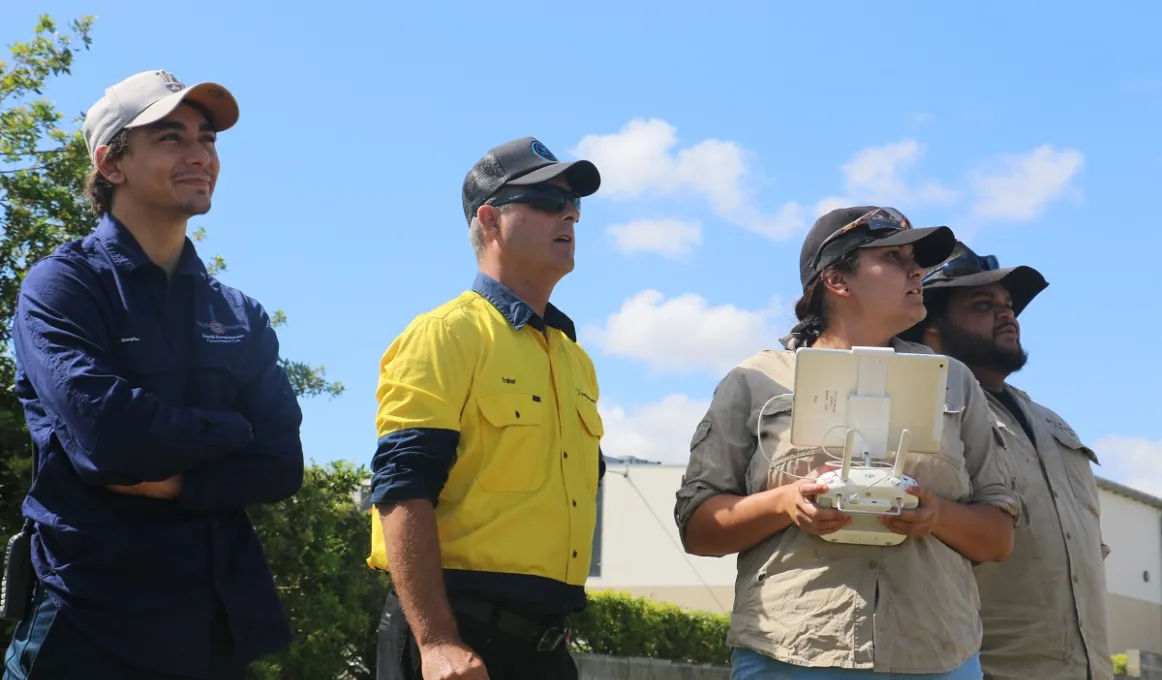Cool burning and high flying at Bunya Mountain Murri Rangers

Drones are helping the Bunya Mountain Murri Rangers care for their Country.
Ancient fire techniques coupled with modern drone surveillance techniques are leading to improved environmental outcomes in the Bunya Mountain region of Queensland.
Allysa Brown is Coordinator of the Bunya Mountain Murri Rangers (BMMR).
‘Drone data will give the rangers a bird’s eye view into what is happening with vegetation health and type,’ Allysa said.
‘But it will also improve the rangers’ ability to read Country from a cultural perspective for fire management planning.’
Last year, Allysa and Ranger Hedley Bell received their CASA Remote Pilot licenses after training with Drone Training Solutions.
Using drones, the rangers can collect field data which will help them evaluate how the vegetation reacts to fire management practices.
They can also evaluate the effect of burning on invasive weeds, invasive native species, total vegetation and fuel loads.
‘This will make assessments on site easier by eliminating hours of walking to get to an area,’ Allysa said.
‘It will enable monitoring of site post-fire, what impacts that fire has had (negative and positive), and calculate the fire coverage area.’
Allysa said that with the combination of both traditional and western training, the rangers are better able to undertake cool (cultural) burns, something they also received training in.
Cool or cultural burns are low intensity, require less staff to control and don’t have a negative effect on the habitat. They allow flora and fauna to respond positively to the process.
‘In cultural fire training, we are taught to read Country, looking at the flora, feeling for the moisture lock in the soil, identifying what flora inhabit the ecosystem and what weeds are in the areas,’ Allysa said.
‘With western training, it’s a whole new way of thinking in response to wildfires and the safety requirements in those cases. This will include water refill points on the fire pump, theory of biomass assessment, and team operations and role assignment.’
Fire Management training does not cover the cultural responsibility of protecting cultural heritage sites but is more focused on wildfire response and safety.
‘This combined approach improves on the western style burns, which unfortunately tend to burn too hot, scorch trees and habitat, and promote the generation of weeds and other undesirable vegetation that can increase fire fuel loads.’
More rangers will be trained as pilots over the coming years and also learning about data analytics, autonomous flight mission planning, and mapping theory.
Find out more
The National Indigenous Australians Agency supports BMMR through the Indigenous Rangers, Jobs Land and Economy Program.
The BMMR work with Western Downs Regional Council, Queensland Parks and Wildlife Service, and the Rural Fire Service to undertake these burning practices for the Bunya Mountain “grassland balds” and to respond and assist in the management of wildfire.